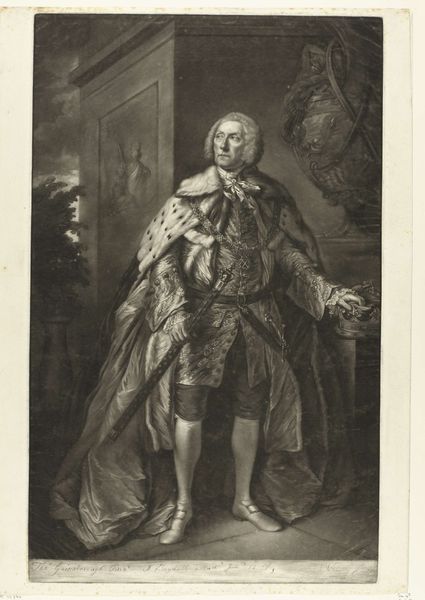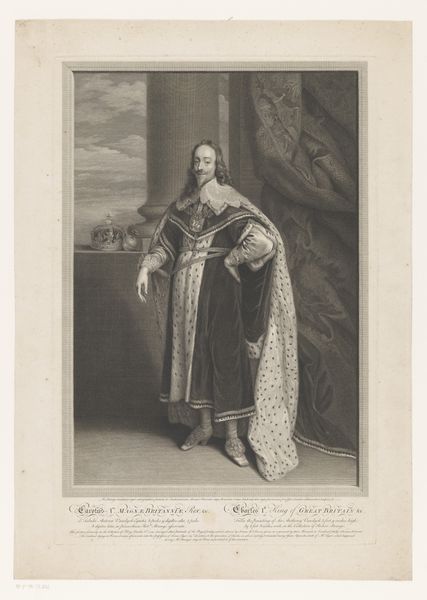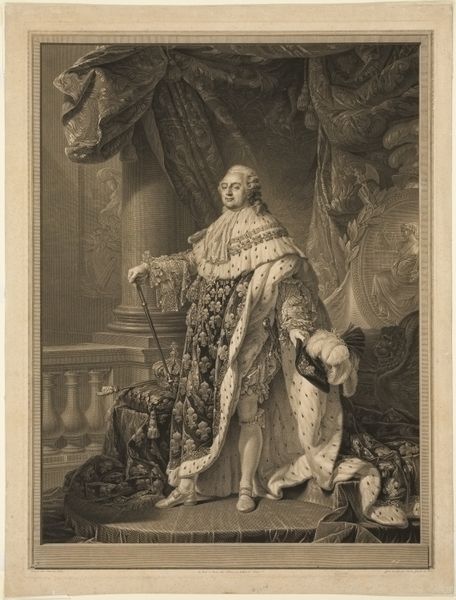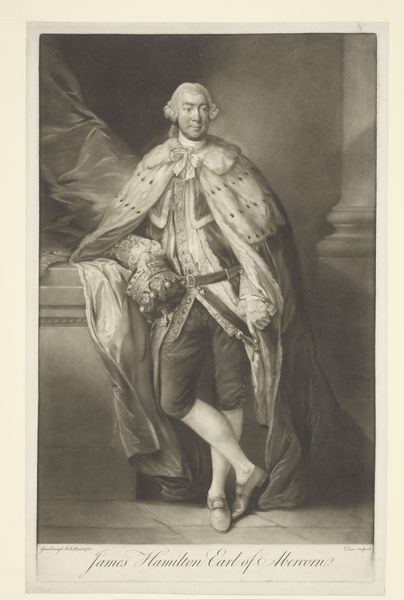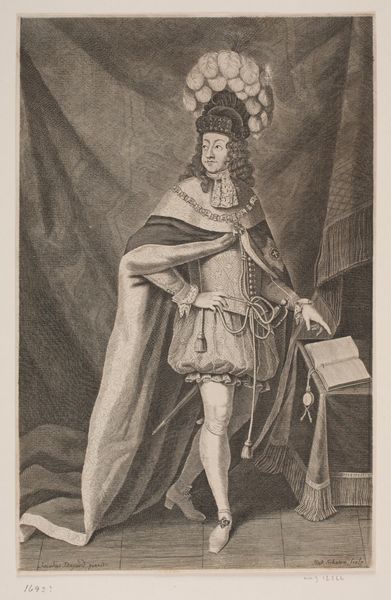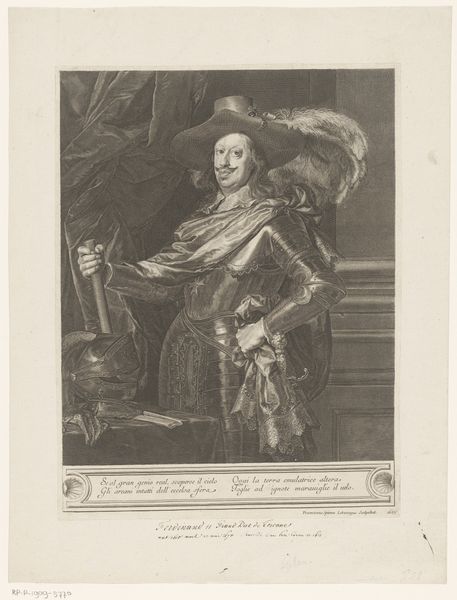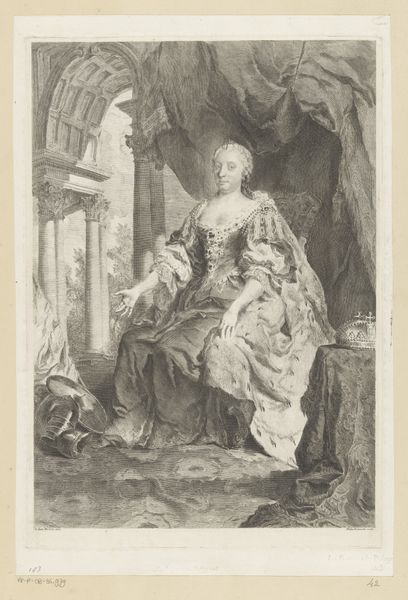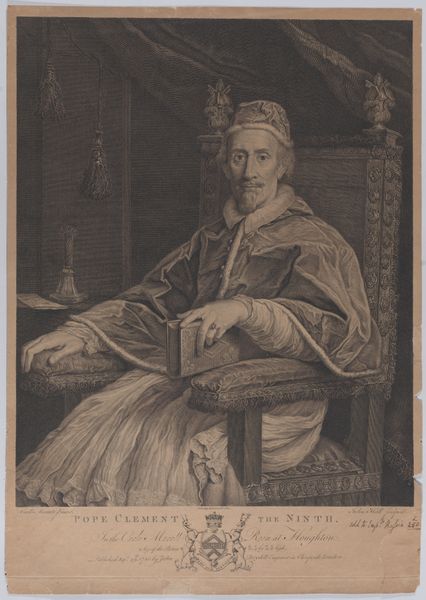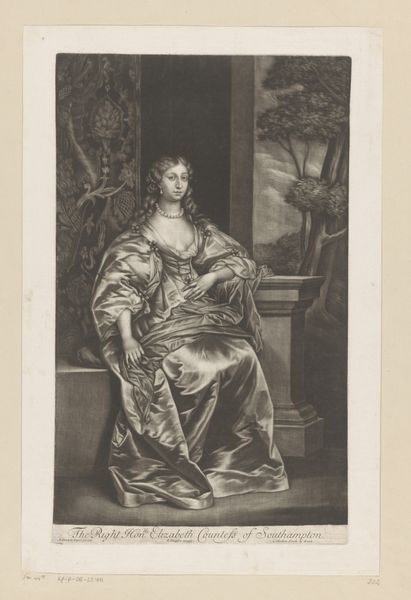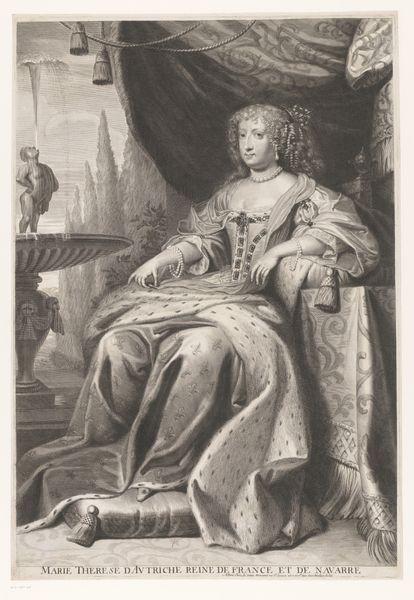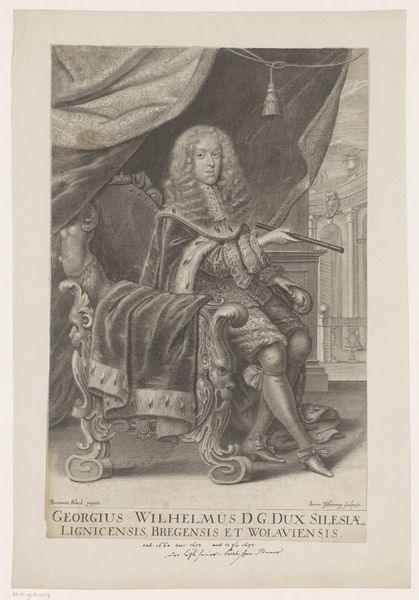
engraving
#
portrait
#
neoclacissism
#
historical photography
#
19th century
#
history-painting
#
engraving
Dimensions: height 665 mm, width 493 mm
Copyright: Rijks Museum: Open Domain
This is John Keyse Sherwin’s portrait of Charles Howard. The image overflows with symbols of power and status, each carefully chosen to project an aura of authority and nobility. Howard stands with a commanding presence, dressed in elaborate garments, with a baton, the unmistakable crown resting on a table nearby, all declare his high rank. But consider the baton—a symbol of authority, like a scepter, yet also a simple, elegant rod. We see echoes of this form in ancient Roman depictions of emperors holding similar batons, and even further back to the staffs of biblical figures, each carrying the weight of leadership. And what of the crown? A motif that has adorned rulers for millennia, from the pharaohs of Egypt to the emperors of Rome. The crown is not merely an object, but an embodiment of the collective hopes, fears, and aspirations of a nation. These motifs are not static; they evolve. The baton, once a symbol of military command, transitions into one of civic leadership, while the crown, originally a sign of divine right, slowly metamorphoses into a representation of national unity. These symbols resonate across centuries and cultures, engaging our subconscious and shaping our understanding of power.
Comments
No comments
Be the first to comment and join the conversation on the ultimate creative platform.
